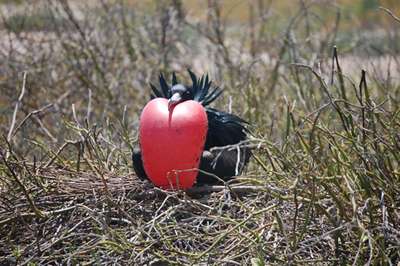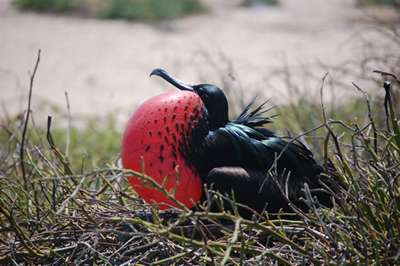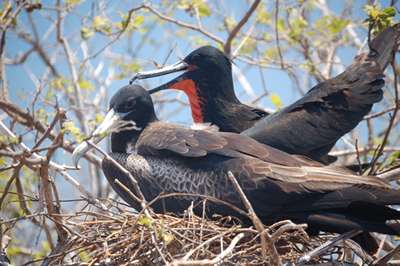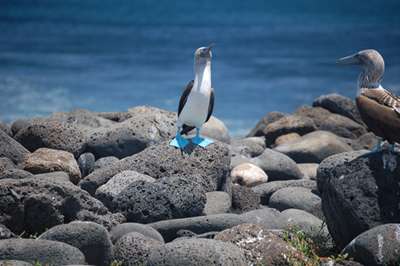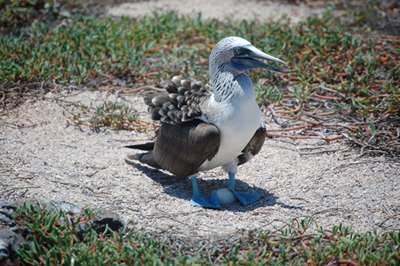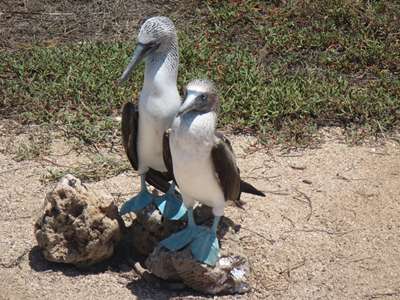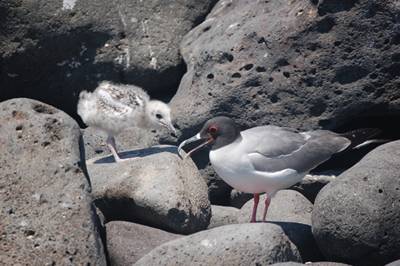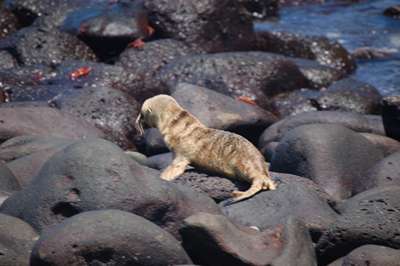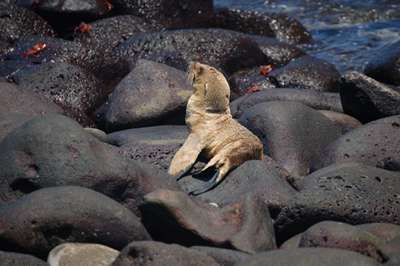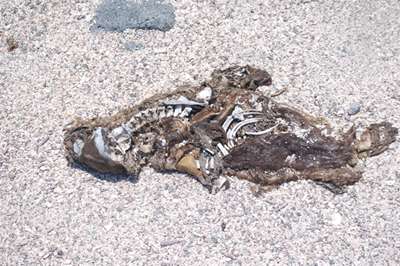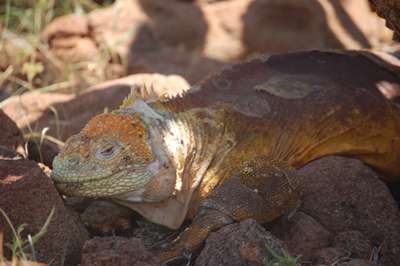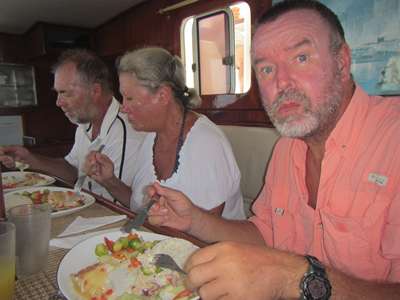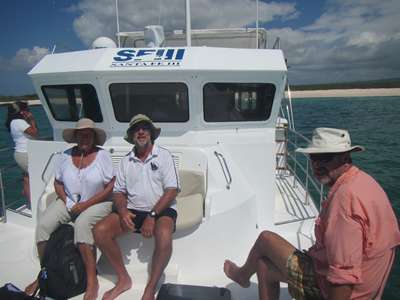North Seymour Island

Wednesday 17th April 2013 We were up early and ashore in plenty of time to be collected by the coach that would take an hour or so to get across the island to the north shore of Santa Cruz. There we transferred to a motor cruiser called Santa Fe III and set off on the 45-minute trip along the coast of Baltra which is the island that lies between Santa Cruz and North Seymour.
M/V Santa Fe III We arrived In North Seymour mid-morning, and were soon ashore with our guide. North Seymour is a small uninhabited island that has no species of plant or animal introduced by humans (other than the land iguanas brought from the neighbouring island – see below). All life on the island is either endemic – unique to the Galapagos islands, or natural – grows elsewhere and arrived here somehow by natural means. It is full of nesting boobies and frigate birds, as well as swallow-tailed gulls. The air is alive with soaring birds and full of the sounds of their mating calls. The male frigate bird puffs out his red throat pouch and when a female flies by he opens his impressive wing span and flaps his wings and calls out to her. She appraises both him and the nest he has built for her and if she is not impressed, she flies on by.
A Great frigatebird male hoping to attract a mate.
He displays his impressive wingspan to passing females. A pair of frigatebirds on their nest.
The result of all the effort - a frigatebird chick. My absolute favourite is the dance of the blue-footed booby. The male lifts each foot in turn several times, then throws back his head, opens his wings and lets out a piercing cry, before beginning his dance all over again. Meanwhile, the female stands by, feigning little interest in this display. He eventually moves closer and continues his dance, now stopping to offer her bits of twig or stroking her beak with his.
Left foot up... Right foot up
He calls to her. You think I’m interested?!
Mother booby with her egg – they lay only one. The happy couple. The swallow-tailed gull is unique in that it is the only gull in the world that feeds at night. Scientists think it might be the bioluminescence of the squid and fish that helps the gulls find their supper. When the gulls return to the nest it is thought that the white spot at the base of the upper beak helps the chicks locate their food. This also solved another mystery for us: when sailing at night to get here we heard loads of birds feeding, we know who the culprits were!
A swallow-tailed gull with its chick, well camouflaged. The shoreline is a nursery for baby sea lions which we saw frolicking in the shallows. An alpha male sea lion patrols the coast to ensure that no sharks come in too close and attack the babies, while the mothers go out to feed. Late afternoon they return to suckle the babies. We saw sad evidence on the beach of one young pup whose Mum didn’t make it back to him.
A sea lion pup waits on the rocks for Mum to return.
Sad evidence that not all the young survive. The land iguanas are unique to Galapagos. In fact they were brought to North Seymour from Baltra, the neighbouring island, by scientists who wanted to see if they would survive there. If they hadn’t, these iguanas would be extinct as the ones on Baltra were wiped out when the US turned Baltra into a military base after Pearl Harbour. It was apparently the fastest eradication of a species in living history.
The land iguana - not the most attractive of animals! We spent a fascinating couple of hours walking around the island. It was the most amazing experience and will definitely be one of our best memories. All too soon it was time to go back to the boat. A very tasty fish lunch was served up as we motored to a beach back on Santa Cruz. There we hoped to see flamingos in a lagoon behind the beach, but were disappointed. Still, a dip in the sea cooled us down and we were ready for the journey back to Puerto Ayora.
A very pleasant lunch back on board Santa Fe III. Taking it easy on deck and letting someone else do the work! |

